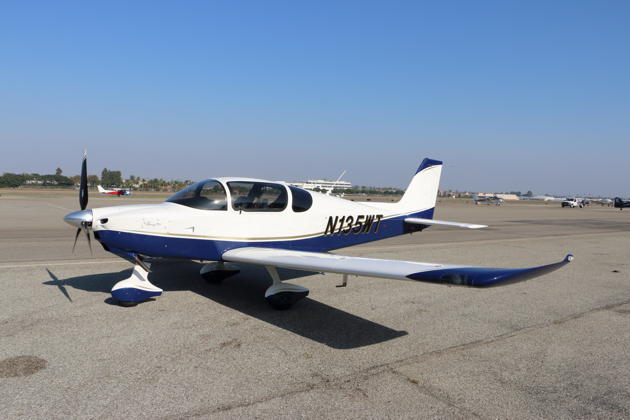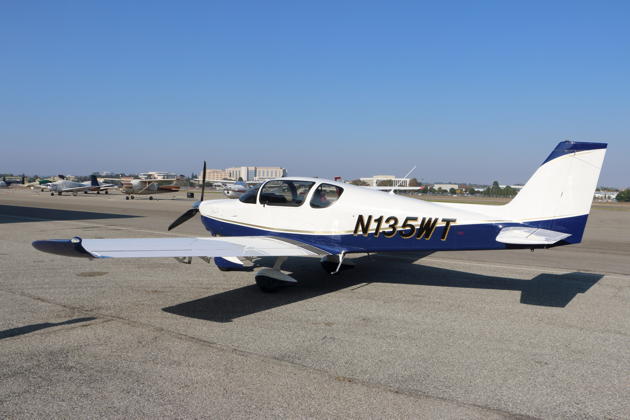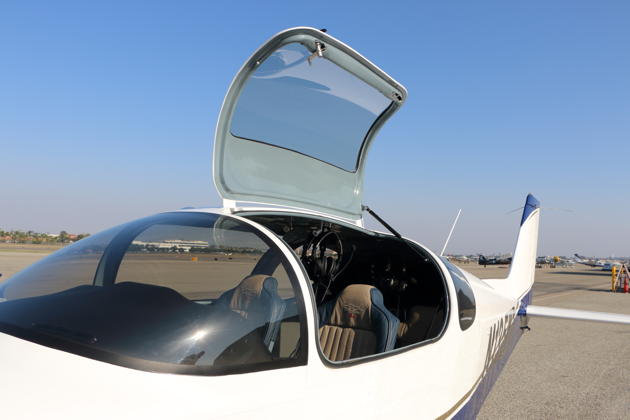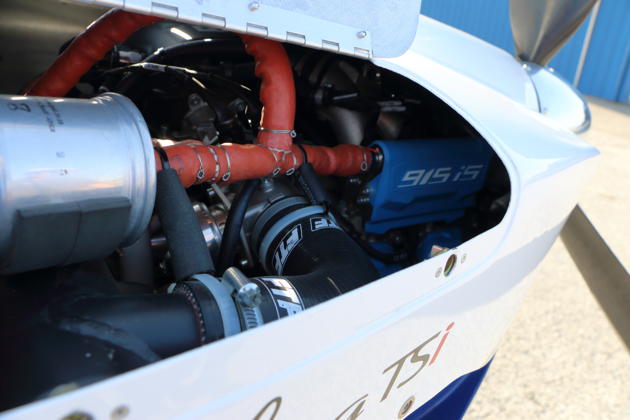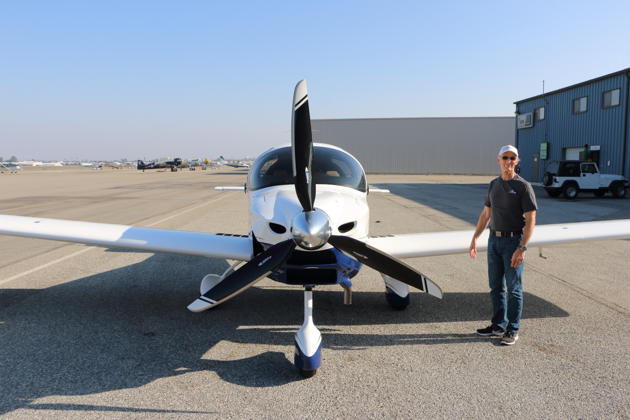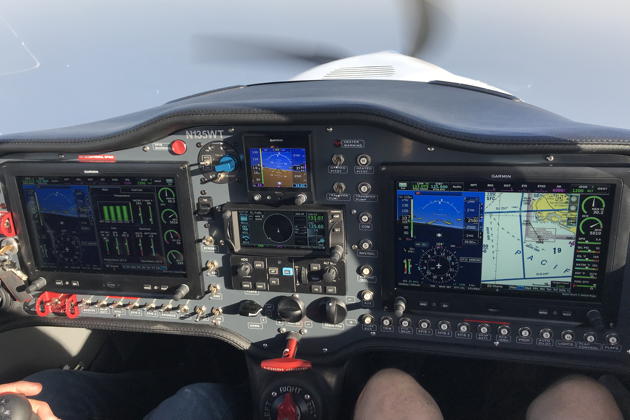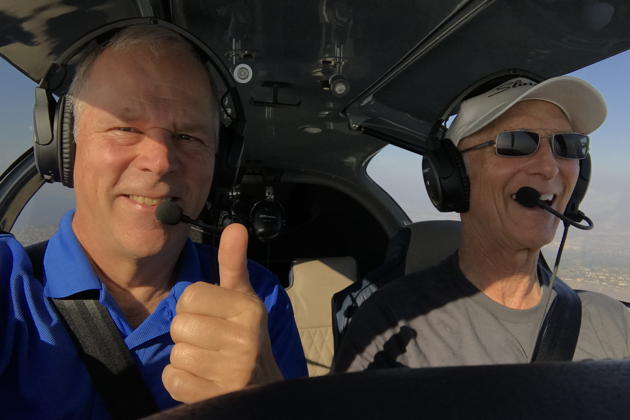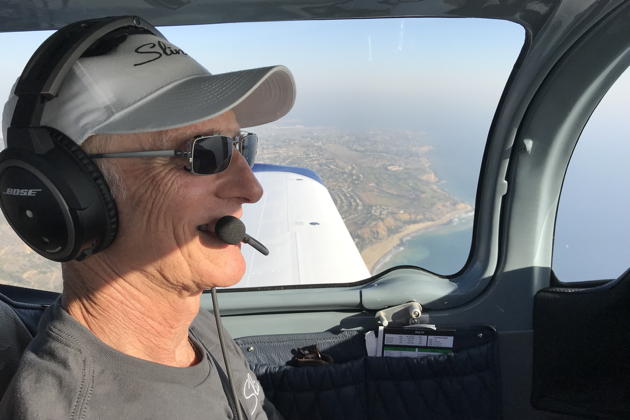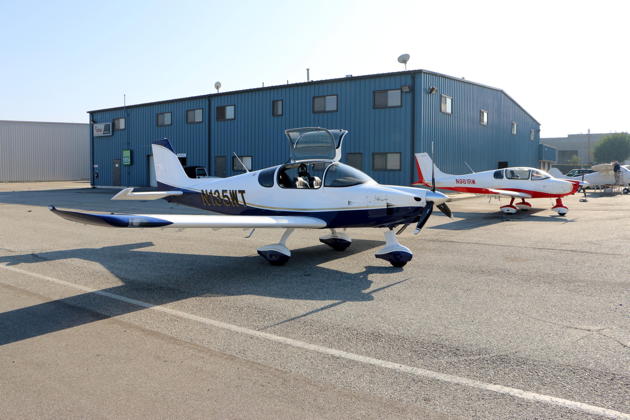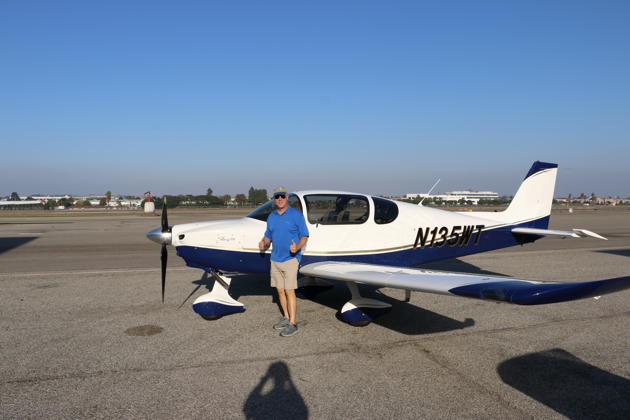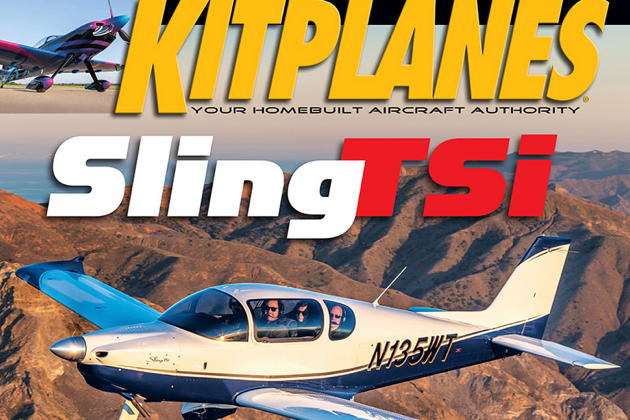FlightLog Archive
∟Aircraft Flown
Flying the Sling TSi - Nov 2018
Airplane design is sometimes described as a compromise, trading range for payload for speed for cost, etc. But an amazing aspect of airplanes and aviation is the fact that designs are continually emerging that do a great job with those compromises, while coming up with better and more innovative designs to fulfill a specific flying mission. I've been exploring the best option to replace our trusty Piper Warrior, which is a classic design in the 4-place, moderate cost, fun to fly, cross-country aircraft design space. Although our Warrior is flying well, has a beautiful new leather interior and an impressive Lynx NGT-9000 ADS-B, her engine is nearing TBO, and required a new cylinder early this year. We would also want to add a modern IFR capability for GPS approaches, and she'll need an exterior paint job soon.
If I look at an upgrade to a new-build true 4-seater with a modern IFR panel, plus possibly more speed or carrying capability, design solutions in the certified aircraft realm are available, such as a Piper Archer, Cessna 182, Cirrus SR-22 or Beech Bonanza. Those aircraft sometimes struggle in the 4-person payload area, but most struggle in the affordability realm, all starting new over $500K, and easily approaching $1 million in full-featured versions. My search has therefore led me to the homebuilt arena, initially to the Van's RV-10.
I had the pleasure of flying a beautiful example of an RV-10 in October, and it has nearly every one of my design requirements satisfied, with intelligent compromises in the design. The only downside is the requirement for a strong set of homebuilding skills, a build facility, and a lengthy build time. I've been exploring other less intensive homebuilding options, and while attending the 2015 AirVenture in Oshkosh, WI, I had the opportunity to walk around and sit in the then-new Sling 4, which met many requirements, but needed a bit more power.
While visiting family in southern California in early 2018, I made a connection with the Airplane Factory team based at Torrance (KTOA), and was able to do another walk around of a Sling 4, and check out the assembly hangar for kits coming from South Africa. The finish and build quality were quite good, they had quick-build and builder assist options, and hinted that a Sling 4 update would be available later in the year at Torrance, after its 2018 Oshkosh debut.
At the 2018 AirVenture, the Airplane Factory team from South Africa unveiled their new update, called the Sling TSi, incorporating the impressive new Rotax 915iS. In November 2018, when I was back in the Long Beach CA area, the Airplane Factory team contacted me, offering a demonstration flight in the Sling TSi, now available at their Torrance facility. The TSi, N135WT, is owned by Wayne Toddun, who graciously allowed a demo flight in his gorgeous new aircraft.
Barry Jay, from the Airplane Factory's Torrance team, coordinated the demo flight on a gorgeous November afternoon, with clear skies and temperatures in the low 80s. Barry had earlier flown a demo flight for a couple that had just purchased a TSi, so the demo aircraft was fueled, warmed and ready. Barry led me through a thorough walk-around, discussing the wing changes from the Sling 4, re-designed cowl, low drag wheel pants, the impressive new Rotax 915iS engine, and giving a close look at the clean fit and finish of the aircraft.
Entry was easy through the gull-wing cockpit doors on both sides of the aircraft. We checked out the ample aft cockpit seating, with good legroom for the aft seaters, plus a fold-down baggage area in back. The front cockpit immediately scored high marks, with two center control sticks, and a single-lever throttle control in the center, with a large dual-screen Garmin G3X display suite. Since I enjoy flying with a throttle in my left hand and a stick in my right, from old fighter habits, I gladly took the right seat, and was pleased that the displays were perfectly aligned from either front seat, not favoring the left seat, which is often the case in many designs.
Barry took care of the easy startup of the Rotax 915iS, and walked me through avionics startup and ground operations. The TSi has a center brake lever, next to the single throttle lever, which controls either the parking brake function, or the normal brake function while taxiing. The rudder pedals solely control turn direction on the ground, with no braking function. Barry let me taxi to the run up area, with the rudder pedals providing crisp control, and I transitioned to using the center brake lever quite easily. We checked the prop control during our run-up, which has a nice user interface. A control knob for three discrete prop settings is mounted in the front center panel, providing T.O., Climb and Cruise options.
After receiving takeoff clearance for runway 29R at Torrance, I pushed the single power lever full forward and was rewarded with quick acceleration, and an even more impressive climb rate as we made a 270° turn over the field to climb to the working area over the Pacific. Visibility in the climb was excellent, and I actually appreciated the cockpit overhead structure, which acted as a sun shield in the bright California sunshine. Even with the warm temperatures, our climb rate was greater than 1000 FPM, so I throttled back slightly, still enjoying the smooth running Rotax 915iS. For hot and high operations, the turbocharger is very welcome, since it can provide full takeoff power up to 15,000 feet.
One item I noted during the climb out was the relatively low flap operation speed of 85 knots. We took off with only a bit of flaps, at the '1' setting, but with the rapid acceleration, I had to increase pitch to ensure we stayed under the flap limit speed if I maintained a full climb power. I cruised out to the working area south of Palos Verdes, and exercised the flight controls with steep turns, slow flight and practice intercepts on a passing Swift and a V-22, using the ADS-B to good advantage. The aileron forces are very smooth and crisp, with no dead zones, providing a great platform for formation flying. Pitch trim is available on the stick, but the forces were so light, I rarely had to use trim. I throttled back to a normal cruise power setting, resulting in around a 5 GPH fuel flow rate. The TSi team advertises a max cruise of 145 KTAS at 9,500 feet MSL, with a fuel burn rate just 8 GPH.
On the return to Torrance, we cruised toward the Long Beach Harbor, then Barry had me descend for a straight-in approach back to runway 29R, setting the prop switch back to 'T.O.', and lowering the flaps once we were below 85 knots. It was very easy to control pitch and power for the approach and landing, and I was rewarded with a squeaker landing just as the AoA stall warning horn sounded. After less than an hour in-flight, I was already very comfortable with this amazing airplane.
Barry Jay, Wayne Toddun and the Airplane Factory team - thanks for the flight demonstration! The Sling TSi is impressive. It's a true four-seater with a useful load of 1,015 pounds, cruises at 145 knots at altitude, has excellent handling qualities, even at slow speeds, with good range and decent interior space. The RV-10 has a true competitor, as do most of the production four-seaters in its class. My replacement airplane decision just got tougher...or maybe easier...!
Epilog
In April 2019, Wayne Toddun's Sling TSi, N135WT, was the cover story for Kitplanes, with an excellent review. Well done Wayne and the Airplane Factory!
Epilog 2
On September 25, 2023, Wayne Toddun's Sling TSi, N135WT, was substantially damaged when it was involved in an accident near San Pedro, California, with injuries to the pilot and passenger. The pilot reported to air traffic control that he had an engine failure, with a witness video showing a trail of white smoke behind the airplane as it maintained a northerly heading. Approximately 12 seconds later the smoke ceased and the airplane subsequently began a right descending turn. The airplane then entered a steep right turn in a nose down attitude and rapidly descended towards the ground. The airplane impacted a field about 3 NM SE of Zamperini Field Airport (TOA), Torrance, CA.
 KASPRZYK
KASPRZYK